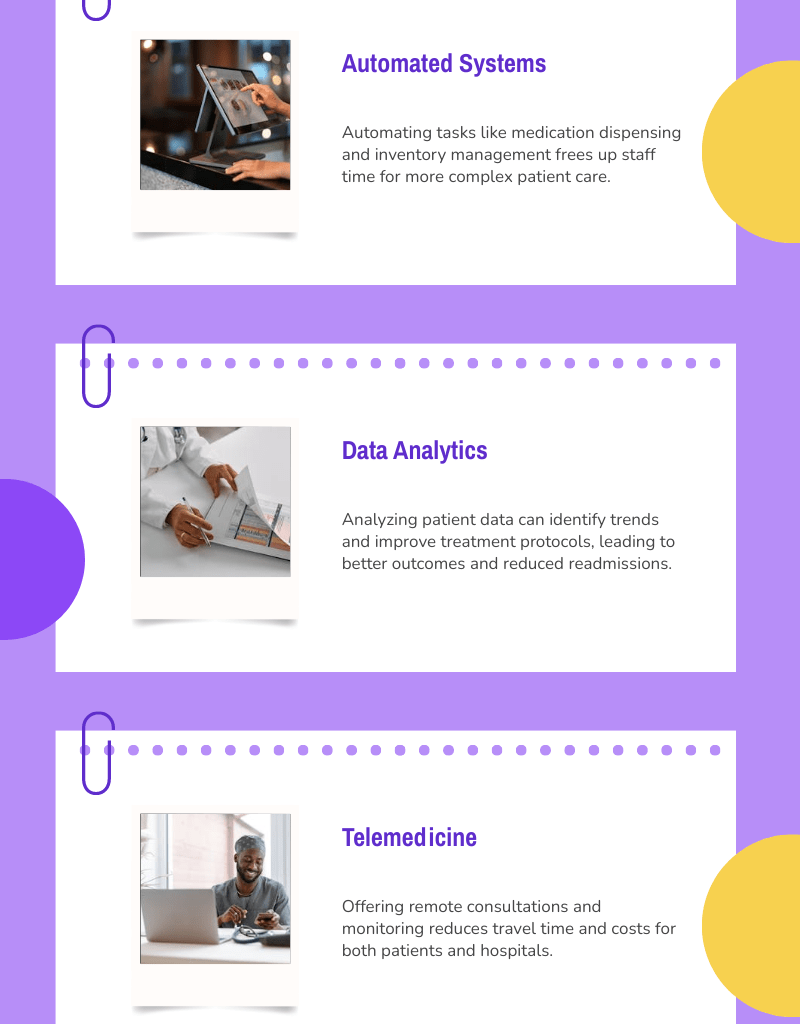In today’s competitive healthcare landscape, hospitals are increasingly turning to smart technological integration not just as a means of improving patient care, but as a crucial strategy for enhancing profitability. This digital transformation is revolutionizing healthcare delivery while creating new revenue streams and operational efficiencies.
The Financial Impact of Smart Technology Integration

Revenue Enhancement
Improved Patient Volume and Retention
- Smart scheduling systems reducing no-shows by 30-40%
- AI-driven marketing targeting specific patient demographics
- Enhanced patient experience leading to better retention rates
- Telehealth solutions expanding market reach beyond traditional boundaries
Optimized Billing and Collections
- Automated insurance verification reducing claim denials
- Real-time billing updates minimizing revenue leakage
- AI-powered coding assistance ensuring accurate charge capture
- Predictive analytics for better financial forecasting
Cost Reduction Strategies
Operational Efficiency
- IoT devices monitoring equipment maintenance needs
- Automated inventory management reducing waste
- Smart energy management systems cutting utility costs
- Robotics process automation (RPA) streamlining administrative tasks
Resource Optimization
- AI-driven staffing models reducing overtime costs
- Smart bed management improving patient flow
- Automated supply chain management reducing inventory costs
- Predictive analytics preventing equipment downtime
Key Areas of Technological Integration
Clinical Operations
- Electronic Health Records (EHR) optimization
- Clinical decision support systems
- Remote patient monitoring
- AI-assisted diagnosis and treatment planning
Administrative Processes
- Cloud-based management systems
- Automated appointment scheduling
- Digital document management
- Virtual check-in and registration
Patient Experience
- Mobile apps for patient engagement
- Online payment portals
- Virtual consultation platforms
- Patient education systems
Implementation Strategy
Phase 1: Assessment and Planning
- Conduct technology audit
- Identify key profit-impacting areas
- Develop ROI projections
- Create implementation timeline
Phase 2: Infrastructure Development
- Upgrade network capabilities
- Implement cybersecurity measures
- Train staff on new systems
- Establish data management protocols
Phase 3: Integration and Optimization
- Deploy solutions systematically
- Monitor performance metrics
- Gather user feedback
- Make necessary adjustments
Measuring Success
Key Performance Indicators (KPIs)
- Revenue per patient
- Operating margin improvements
- Cost per patient encounter
- Patient satisfaction scores
- Staff productivity metrics
- Return on technology investment
Financial Benefits
Short-term Gains
- Immediate cost reduction through automation
- Improved cash flow from better billing practices
- Reduced administrative overhead
- Enhanced resource utilization
Long-term Benefits
- Increased market share
- Sustainable competitive advantage
- Better risk management
- Improved patient outcomes leading to value-based care rewards
Challenges and Solutions
Common Challenges
- Initial investment costs
- Staff resistance to change
- Integration with legacy systems
- Data security concerns
Mitigation Strategies
- Phased implementation approach
- Comprehensive training programs
- Regular stakeholder communication
- Strong change management protocols
Future Outlook
Emerging Opportunities
- AI-driven personalized medicine
- Blockchain for secure health information exchange
- 5G-enabled remote procedures
- Advanced analytics for population health management
Conclusion
Smart transformation through technology integration represents more than just modernization—it’s a strategic imperative for hospitals seeking to enhance their profitability. While the initial investment may be significant, the long-term benefits in terms of increased efficiency, reduced costs, and improved patient care make it an essential step for healthcare organizations looking to thrive in an increasingly competitive landscape.
Success in this transformation requires a well-planned approach, focusing on both the technological and human aspects of change. Organizations that can effectively implement and optimize these smart solutions while maintaining high-quality patient care will find themselves well-positioned for sustainable growth and enhanced profitability in the evolving healthcare sector.

